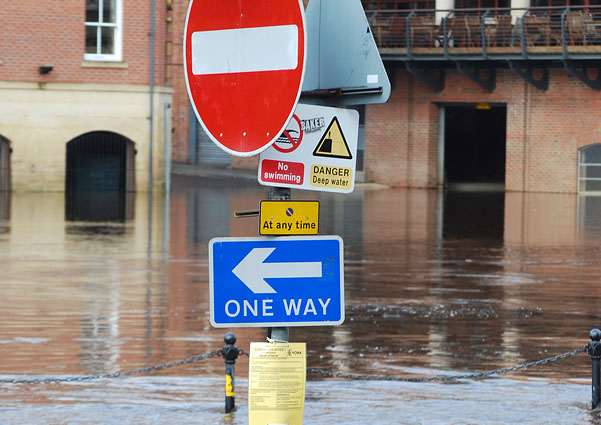Natural catastrophes relentlessly carve a trail of destruction through developed areas, claim lives and strip survivors of their livelihoods. The destruction along the US coast caused by hurricane Sandy is only the most recent example from a long line of devastating events. More than 100 fatalities and initial estimates of economic losses totaling up to 50 billion dollars leave no doubt: the potential damage that natural catastrophes can cause has taken on huge new proportions.
Settlement patterns such as those along the US coastline play a key role in explaining why the damage caused by these natural catastrophes is so immense. More than half of US citizens now live within 50 miles of the coast, in an area that is at an increased risk. Construction work is continuing unabated on coastlines and rivers using construction methods that virtually ignore the increasing risk. Protective measures initiated by the state are few and far between. The public help provided in the aftermath of weather-induced catastrophes is also sending out the wrong signals. It could turn into a nightmare sooner rather than later.
In order to ensure that this does not happen, it is important that insurance can still be obtained in the private sector even in regions at increased risks like these. This includes the use of catastrophe models that capture the momentum of future claims developments. Insurers rely on these to calculate rates that will be commensurate with the risk in the future, too. Insurers will have to pass more of the risk on to the capital market. Catastrophe bonds (or "cat bonds") are one of the main tools used to spread the financial risks of natural catastrophes more widely and, as a result, enable them to still be insured by the private sector at all.
As a result, governments should not let themselves be drawn into more insurance commitments in high-risk areas. The policies tend to be subsidized, meaning that the premium is not in line with the risk. Usually, the customer does not share in the risk either, which would make them more cautious. This results in false allocations that are extremely significant from an economic perspective. Insurance rates that are kept artificially low encourage people to not behave in a risk-adverse manner, and indeed to actually take risks. By way of example, they continue to build, without hesitation, in areas that are threatened by natural catastrophes. Ultimately, they rely on the government; it will foot the bill for any damage that is under-insured.

